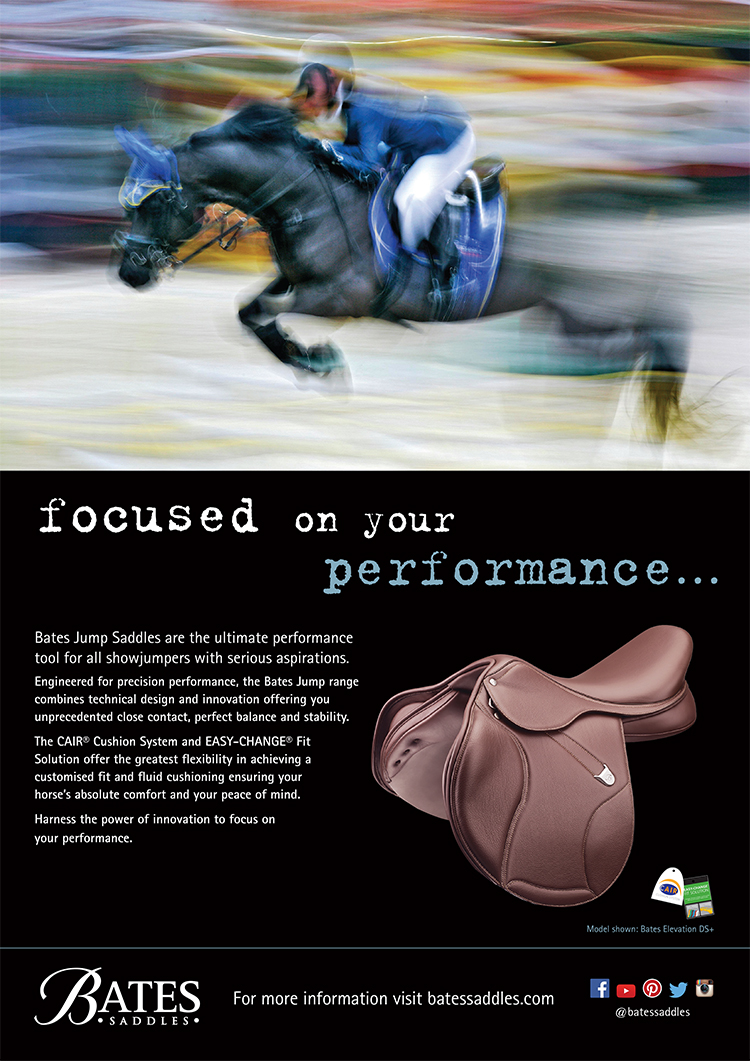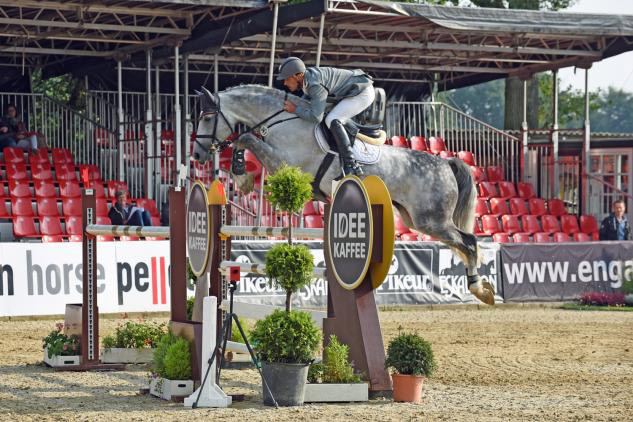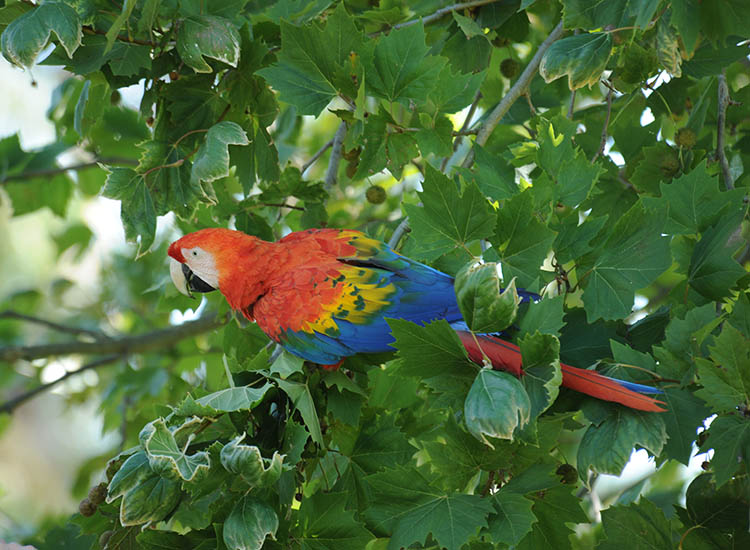
 Story by Chris Hector and photos by Roz Neave
Story by Chris Hector and photos by Roz Neave
The final sessions of George Morris’ Australian clinics were conducted in the wonderful grassed paddocks at Wayne and Vicki Roycroft’s Mt White property and George was in his element with space and natural obstacles to play with. We were all comfortably seated and Mr Singleton’s travelling aviary were still chattering away cheerfully in the trees, as the next lot of horses and riders appear…
The eventers were well represented in this group with Craig Barrett on the stallion, Staccato (the stallion was also represented at the clinic by his daughter, Panamera ridden by Stuart Tinney).
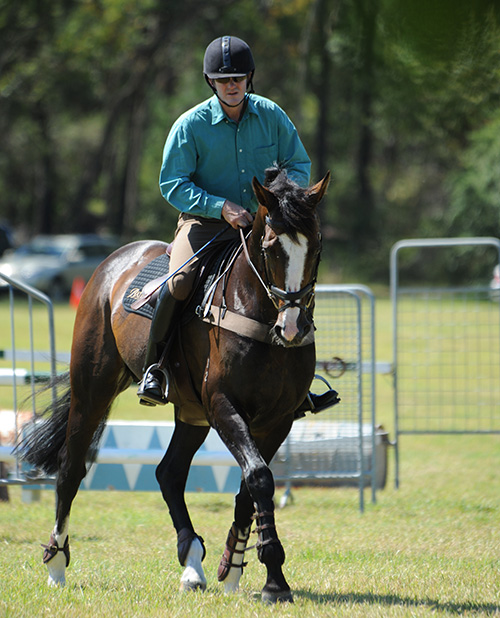
Craig and Staccato show some shoulder-in
Emma Armstrong and Voortrekker, and making the long trip from Queensland, Kevin McNab and Gameplay, along with the showjumpers: Greer Butcher riding TP Gifted (out of an imported Voltaire mare), Chris Chugg and the imported mare, Colthaga, Shannon O’Meara and Sweet Revenge, and rising showjumping star, Jamie Winning riding her young mare, Vangelo Mystique.
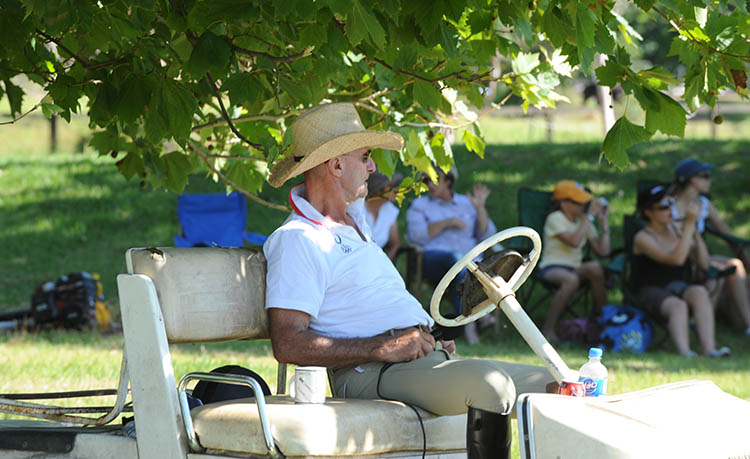
Once again, we start with the most basic of the basics: Walk / Trot / Walk: “Quick transitions, that’s what keeps the horses thinking in front of the leg.”
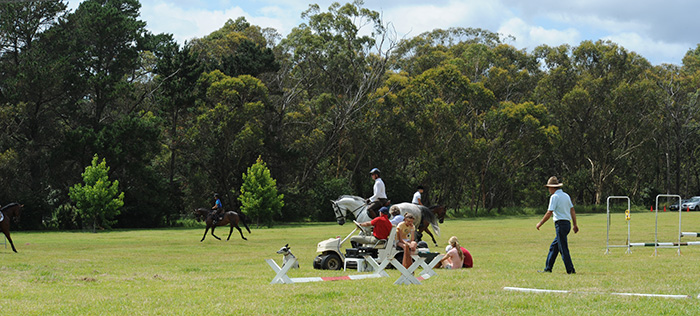
And Chris Chugg is sent off to lead the group in a serpentine of four loops, in light seat (‘just touch the saddle’) and making sure he doesn’t bend the horse in the neck (‘bend the horse in the mid-section, not at the wither’) in contact (‘perfectly steady contact, don’t jiggle the bit’). When track went downhill, the riders were to post the trot back uphill, in two point:
“Stand in the stirrups, your back hollows slightly and is slightly out of the saddle. It is important that you are well forward with a short rein. That’s two point or as the French say ‘in suspension’. It’s a very good balancing exercise, especially uphill. Now back to slow sitting trot and a little shoulder in.”
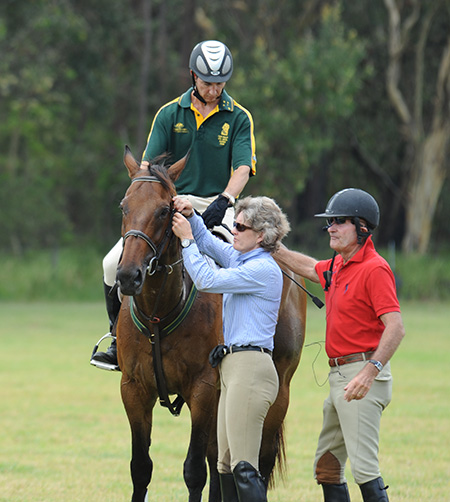
Vicki does a gear adjustment, everything has to be correct at a George Morris Clinic
It was time for George to have a ride, and this time it was Kevin’s Gameplay. Once again, the master was bothered about the tack: “I don’t like ring bits, the horse is reluctant to go to the bit, and his back is hollow, the croup is up, the back low, and the hind out behind.”
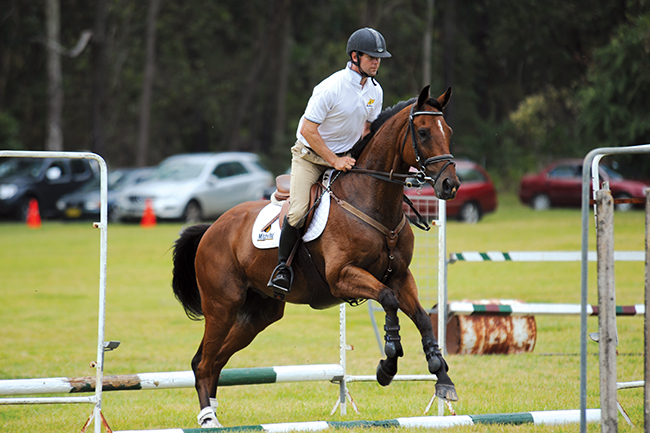
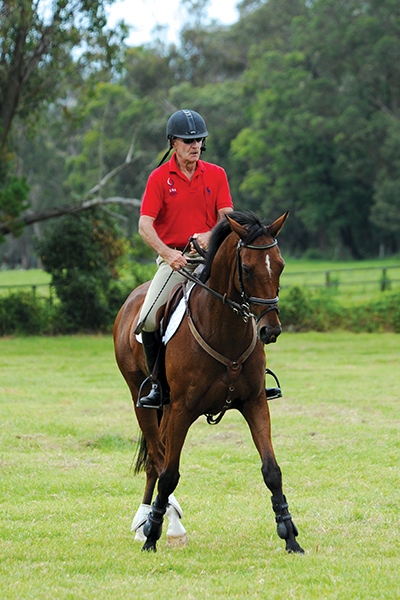 “I start with the back of the horse. Is the horse tracking straight? Is the horse walking forward? Is my seat connected to the horse’s back? This horse has had very good work in the half pass. See that I keep my elbows close to my hips and my hands in front of me, not dropping on the shoulder. Watch how the contact is getting better as I work with my legs…”
“I start with the back of the horse. Is the horse tracking straight? Is the horse walking forward? Is my seat connected to the horse’s back? This horse has had very good work in the half pass. See that I keep my elbows close to my hips and my hands in front of me, not dropping on the shoulder. Watch how the contact is getting better as I work with my legs…”
next counter canter
Now George was riding counter canter to flying change to counter canter: “this is a very good exercise for eventers. If a horse doesn’t maintain his canter rhythm without leg, then he’s not in front of the leg. This horse has got to be lighter to the rider’s legs.”
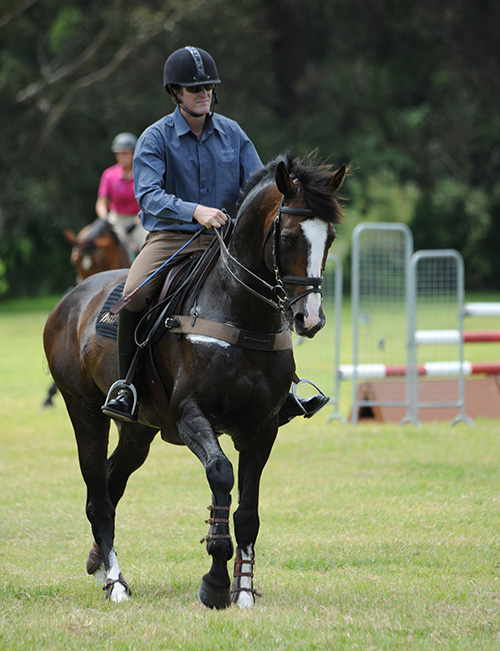
Craig Barrett demonstrates counter canter
All the while George was keeping his seat light: “You don’t have to be butt grabbing, obsessed with heavy sitting, you have to substitute seat riding with leg riding. Close the hip angle and get your body forward. It’s like riding with hands too low, it’s a virus that emerged somewhere from the bowels of Europe.”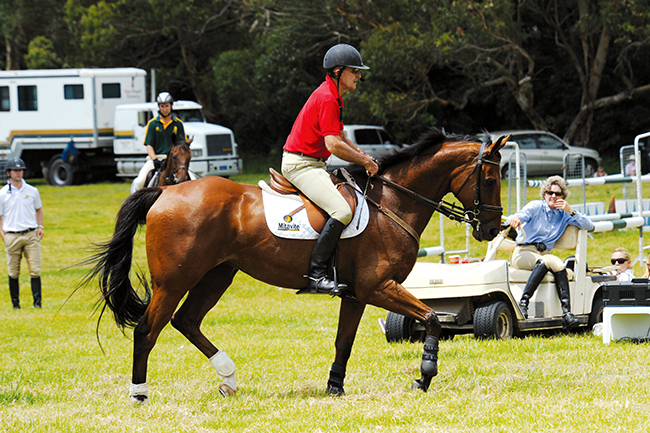
After I get off Kevin’s horse, it has to feel better…or worse. It’s like marriage, for better, for worse, mainly worse I guess.”
“Precision, repeat something over and over again, that’s how you get the precision habit. Some people think it’s boring. I don’t. Repetition if properly executed is what teaches the horse.”
more follows
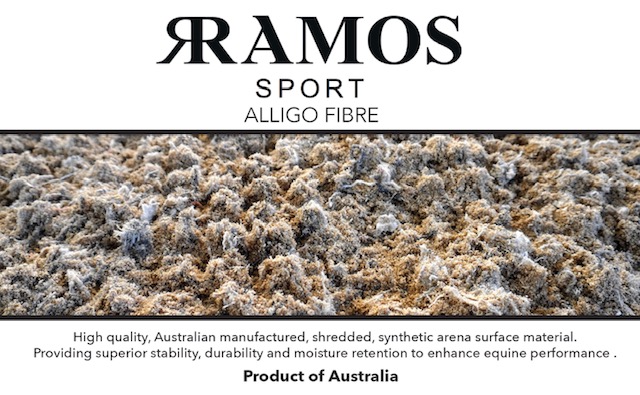
As usual, Chris Chugg is quietly experimenting with something fancy in a corner hopefully out of George’s eye. Fat chance! “Wait Chuggie, you get in front of me. I’m supposed to do the thinking.”

It’s time to start work on George’s line of fences, starting with a little figure of eight to get the horses jumping: “Once you see the distance, don’t attack the distance, don’t over-rider, just soften and go with the horse.”
And Kevin has to pay strict attention to his outside rein in the flying changes: “You have to keep the horse on the outside rein for the flying changes.”
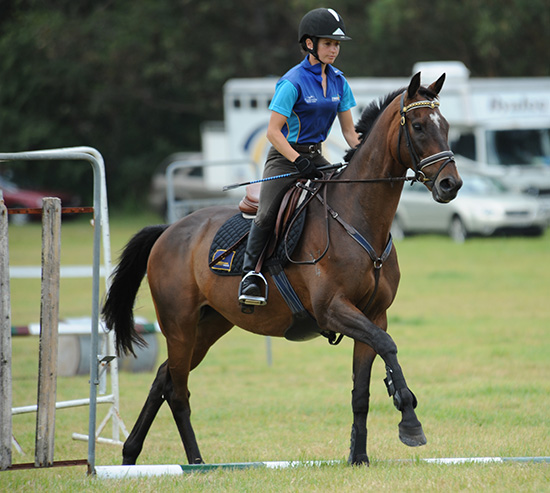
Emma Armstrong and Voortreker see a distance
Once again the group is to face the impulsion test of the ditch with trees behind it: “This is a very good group, but I would still anticipate the worst. Expect a stop. I would be very ready to go to the stick. That’s the ultimate riding aid, the whip, the spur is often softer than the whip, the cluck softer than the spur, the legs softer than the cluck. Make that stroke behind the saddle a habit, the horse hesitates and it is automatic. Watch Ian Millar, he is an artist with the whip, you don’t even see it.”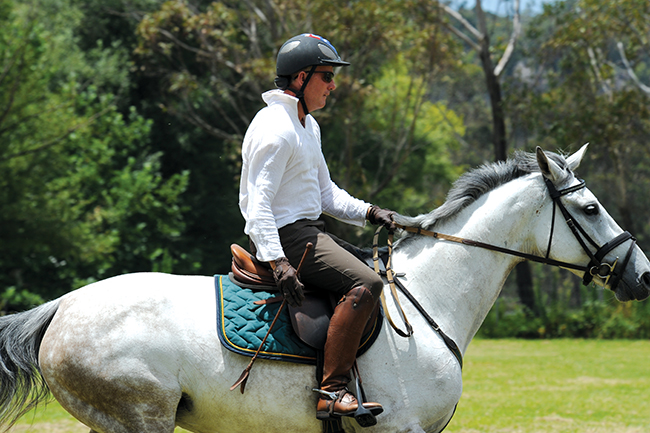
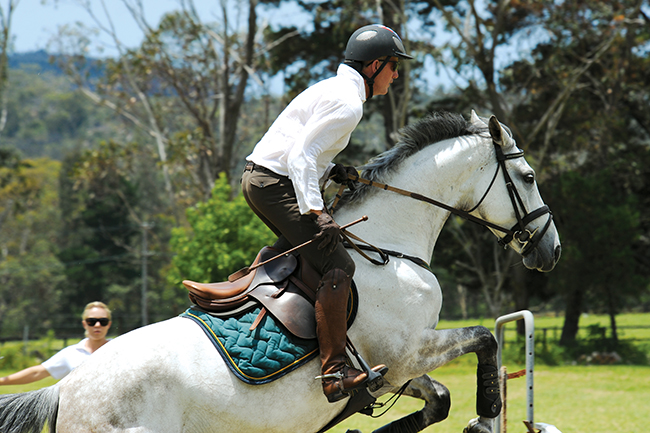
The riders are doing the line, a skinny, circle to the trip bar, five strides to the planks, and seven to the ditch:
“Don’t circle, cold turkey to the ditch in a defensive position.”
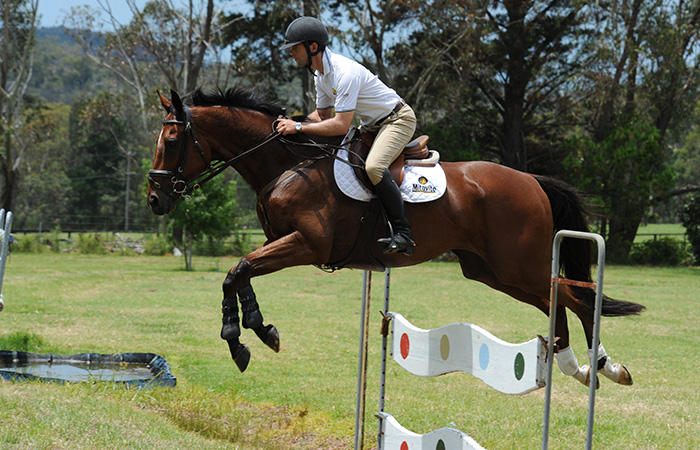
No problem over the ditch for eventers Kevin and Gameplay
And we are getting some classy stops – Chugg on his grey mare, Jamie on her mare. Next time Chugg is ready, touches the grey and gets the ditch – “that’s good, don’t loiter there. This is simple, this track, don’t complicate the seven, take your fence and get up there and wait. See Kevin made it so simple, because he is thinking. Get there and wait and the horse can back up.”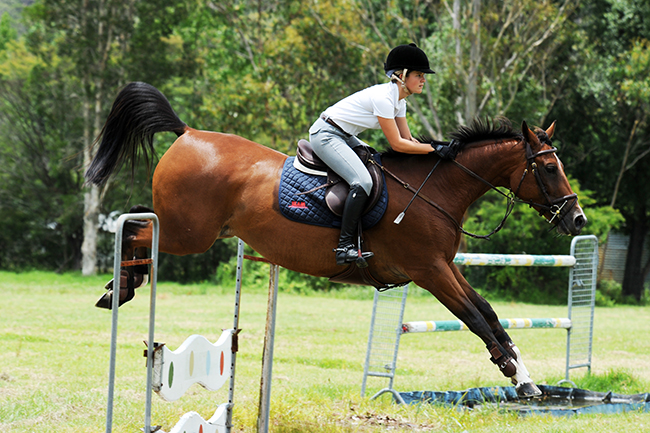
There’s another way of doing it: “That is how not to do it – you take, take, then gun at the last minute, that’s grabbing. The adjustment happens on the landing, not on the next fence. Keep it smooth, not stop/start, stop/start. Watch each other – this is not ROCKET SCIENCE. You don’t have to invent the space shuttle, keep it simple, get on the distance early and your horse can set himself up and jump. Once you go 100% to the fence, as Paul Schockemöhle says, you can let him jump backward. If you start legging them to the fence, they get quick and flat and hit jumps. With the speeds you have to travel over modern tracks, you can’t afford to stop and start.”
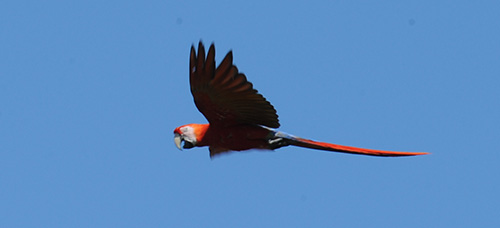
Breeding jumpers? Thinking about the next breeding season? There’s a great range of stallions available from International Horse Breeders: www.ihb.com.au
Like Diacontinus – 2022 Grande Prize Winner
This article first appeared in the November 2009 issue of THM.
ADVERTISEMENT
Want to breed your own showjumping star?

